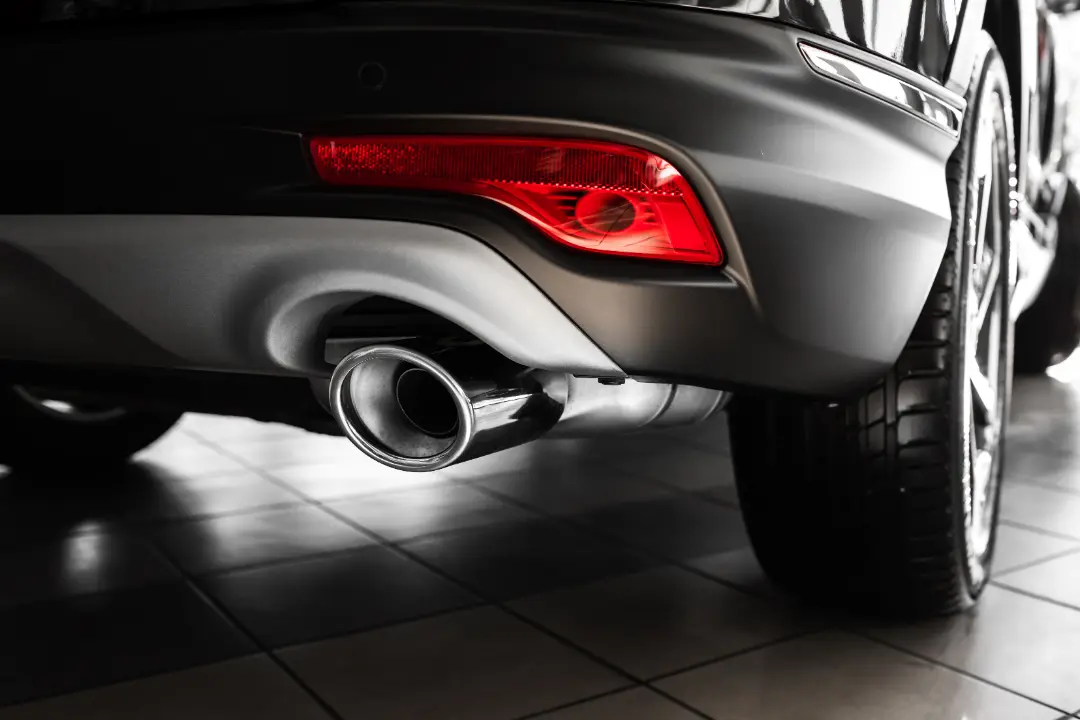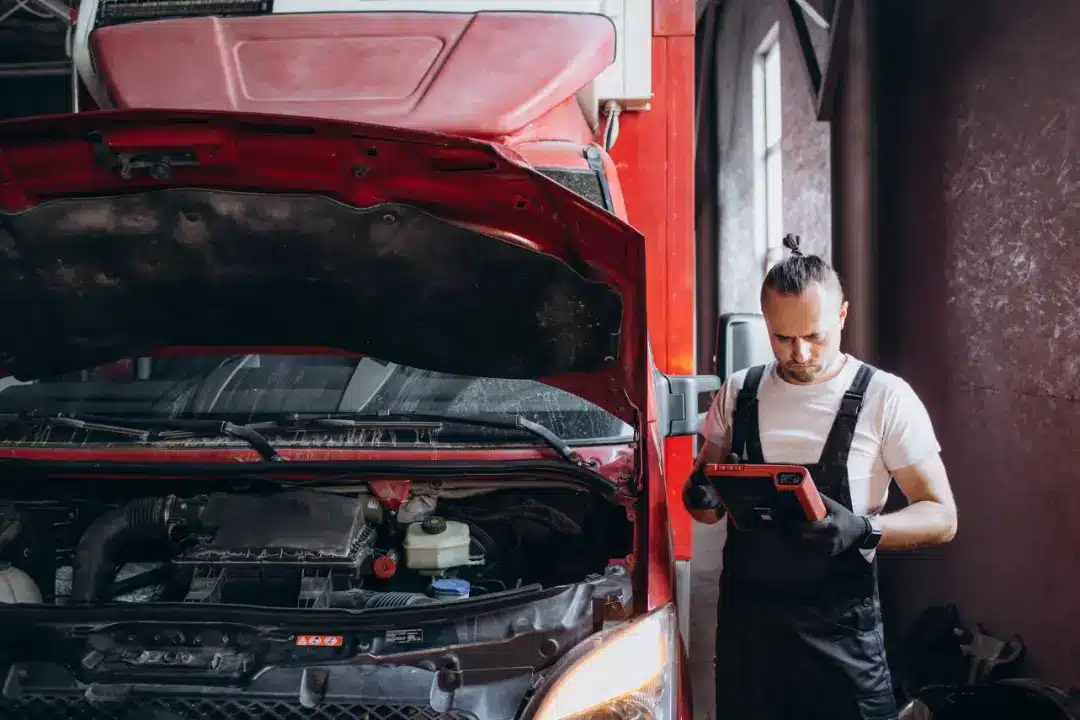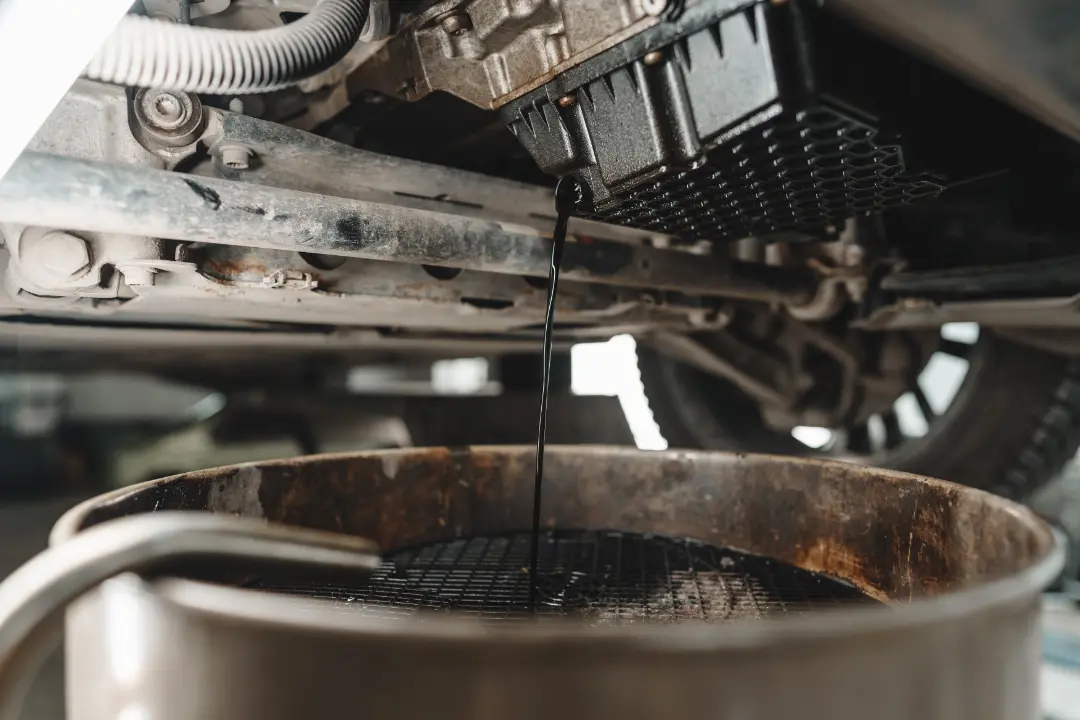Are you wondering how to charge a car battery safely? This guide covers everything from gathering tools to completing the charge efficiently.
Key Takeaways
- Gathering necessary tools and safety equipment, such as gloves and safety glasses, is crucial for safely charging a car battery.
- Inspect the battery for damage and clean the terminals to ensure a good connection before charging.
- Upon completion of charging, always disconnect the charger in a specific order to minimise the risk of sparks and ensure safety.
Gather Your Tools and Safety Equipment
Before charging your car battery, gather all the necessary tools and safety equipment, including a car battery charger, protective gloves, safety glasses, and a cleaning brush. Rubber gloves will protect your hands from any acid on the battery, and safety glasses will protect your eyes from sparks or acid splashes. Additionally, always have a fire extinguisher on hand for emergencies.
A cleaning brush or wire brush is essential for cleaning the battery terminals to ensure a good connection for the charger. A wrench will be necessary to loosen and tighten the terminal nuts. Having all these tools ready before starting will make the process smoother and safer.
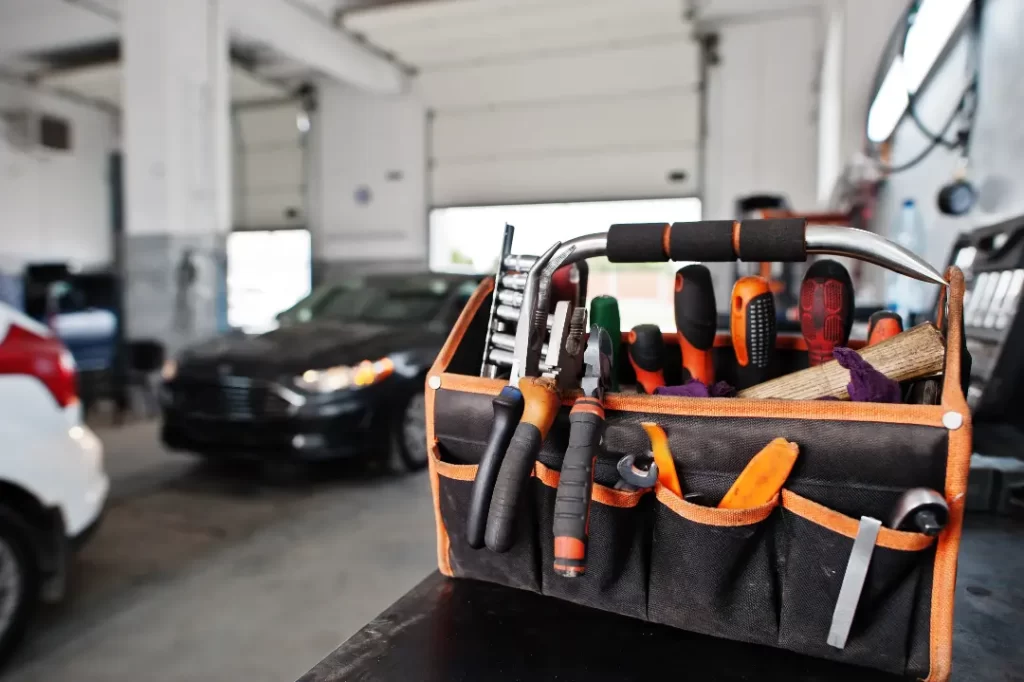
Locate and Inspect the Car Battery
First, locate your car battery. In most vehicles, the battery is situated in the engine bay. After locating it, make sure to identify the positive and negative terminals. The positive terminal will have a plus sign, while the negative terminal will be marked with a minus sign. Inspect the battery for any visible damage or corrosion before proceeding.
Check for any cracks or leaks in the battery casing, as these indicate the battery may need replacement rather than charging. Corrosion on the terminals can impede the charging process, so this should be addressed before you begin charging the battery.
Prepare the Battery for Charging
Before charging, ensure all car electronics are turned off to prevent electrical issues. Inspect the battery terminals for dirt or corrosion that may be hindering the charging process.
Cleaning the terminals is straightforward: use a solution of baking soda mixed with water and a wire brush to scrub away any corrosion. This step ensures a good electrical connection between the battery and the charger.
With clean terminals and no visible damage, you’re ready to charge.
Connect the Car Battery Charger
Ensure the charger is powered off and unplugged before connecting it to the car battery. Position the charger as far away from the battery as the cables allow.
Start by listing some charger clamps to connect the red cable to the positive terminal first, then attach the black cable to the negative terminal. Give the clamps a little wiggle to ensure a secure connection.
Once both cables are connected, refer to the charger manual to confirm the setup is correct. Then, you’re ready to start. First, plug in the charger and turn it on.
Set Up and Start Charging
Now that everything is connected, you can start charging. Plug the charger into an electrical outlet. Select the appropriate charging amperage based on your battery’s condition; a lower setting is generally safer for initial charging. If your battery is in good condition, a higher amperage can be used for a faster charge, but be cautious as it can be harsher on the battery.
Set the correct amperage and switch on the charger to begin the battery charging process. Monitor to ensure everything proceeds smoothly.
Monitor the Charging Process
Monitor the charging process to ensure safety and efficiency. Check that the charger’s clamps are securely attached to the battery terminals and not touching each other. The positive clamp should always be connected first to minimise the risk of sparks.
Periodically verify that the clamps maintain a tight grip on the terminals. Some modern battery chargers have an automatic shut-off feature that stops charging once the battery is fully charged. Larger issues may be at play if the charger fails to recharge the battery.
A fully charged 12-volt battery typically requires a charger output of about 14.5 volts.
Disconnect the Charger Safely
When the battery is fully charged, disconnect the charger safely. Start by turning off the charger and unplugging it from the electrical outlet. Then, disconnect the negative clamp first, followed by the positive clamp. This order reduces the risk of sparks and ensures safety.
Keep the charger away from the battery while disconnecting to avoid the potential danger of igniting released hydrogen gas.
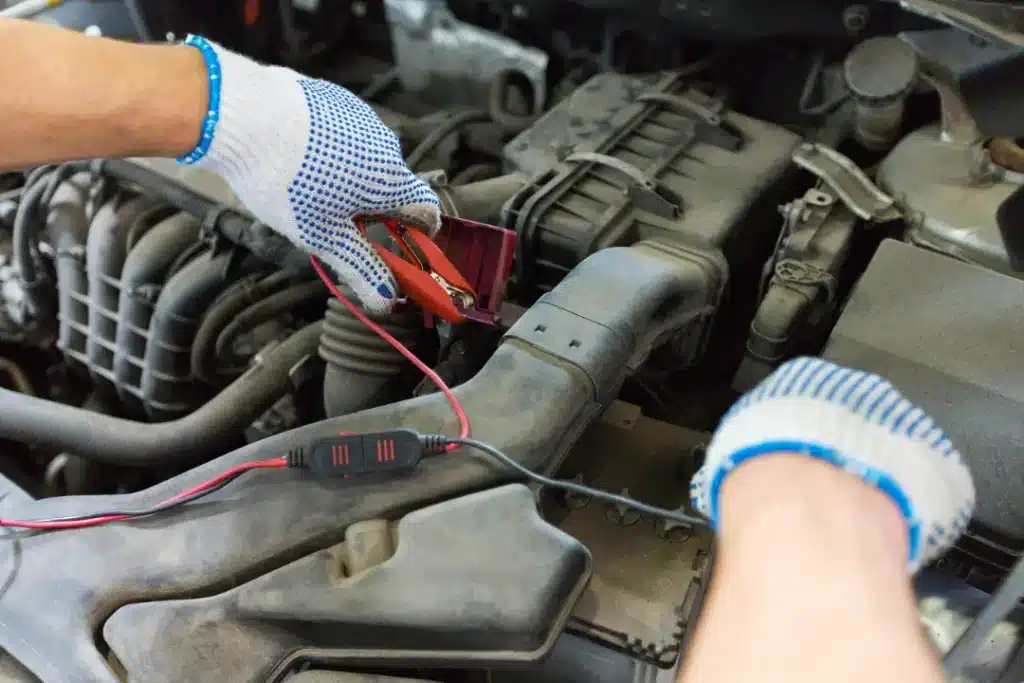
Reinstall and Test the Battery
Reinstall the battery by reconnecting the positive terminal first, followed by the negative terminal. Ensure all connections are secure and tight to prevent issues when starting the vehicle.
Start the vehicle and check that all electronic components, such as the lights and radio, are functioning properly. This step confirms that the battery is installed correctly and holding a charge.
How Long Does It Take to Charge a Car Battery?
The time required to charge a car battery can vary depending on several factors. A standard charger may take 10 to 24 hours to fully charge a car battery, while a trickle charger can extend the charging period to three days or more.
Driving at highway speeds can recharge the battery faster, but it usually won’t fully recharge without additional charging. The battery charger type and current state are key factors in determining the charging duration.
Signs Your Car Battery Needs Charging
Recognising signs that your car battery needs charging can prevent unexpected breakdowns. A slow engine crank is a common indicator. Dim lights and warning indicators on the dashboard also suggest a low battery.
If electrical components like windows and lights respond slowly, it may be time to charge the battery. Additionally, if the headlights dim when the engine is running but brighten when you rev it, this points to a potential battery issue.
Maintaining Your Car Battery
Maintaining your car battery properly can extend its life. Regularly check for signs of corrosion or leaks. Older lead-acid batteries may need distilled water to top up electrolyte levels. Applying a battery terminal protector spray post-charging can help prevent corrosion.
Avoid frequent short trips as they can deplete battery strength, and always turn off lights and accessories when the engine is not running to prevent the battery from running flat.
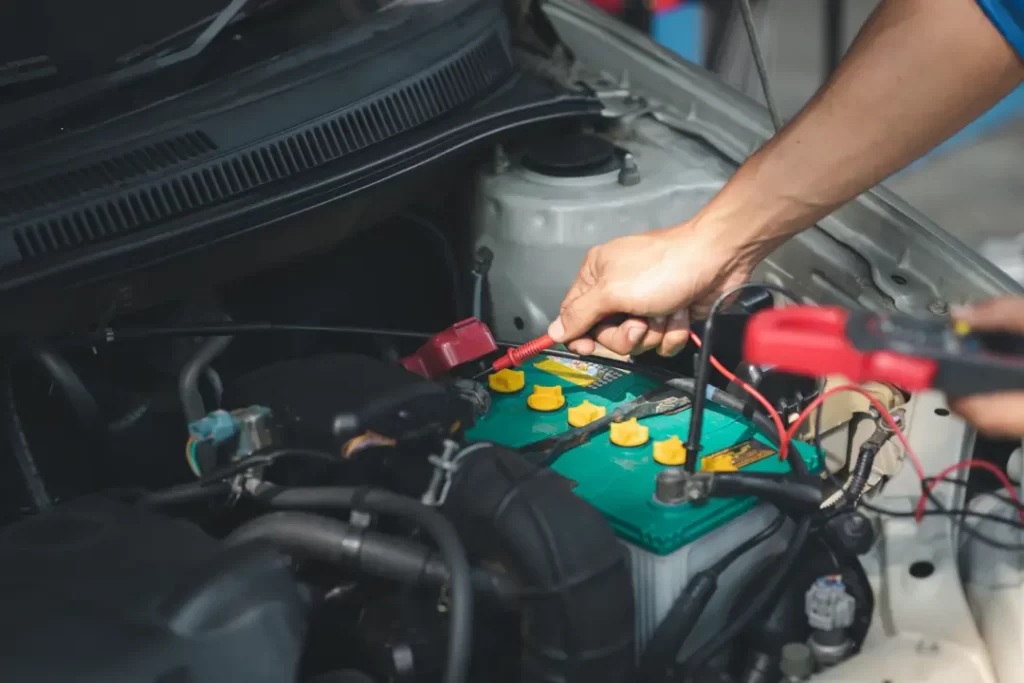
When to Seek Professional Help
Sometimes, professional help is necessary despite your best efforts. If the dead battery fails to hold a charge after recharging, test it at an auto parts store. Persistent issues or visible damage to the battery also warrant professional inspection.
Sovereign Motor Engineers’ team of qualified technicians is equipped to diagnose and repair any battery-related issues. With their extensive experience and commitment to quality service, you can trust them to keep your vehicle running smoothly.
About Sovereign Motor Engineers
Sovereign Motor Engineers has been a trusted name in auto services since 2010. They offer various services, including diagnostics, repairs, servicing, and sales of used cars for all makes and models.
Customer satisfaction is a top priority, and Sovereign Motor Engineers’ commitment to using high-quality parts and excellent customer service is evident in the numerous positive testimonials they receive. Whether you need routine service or a complex repair, Sovereign Motor Engineers is equipped to handle it professionally and professionally.
Summary
Charging a car battery safely and efficiently involves several important steps, from gathering the right tools and safety equipment to monitoring the charging process and reinstalling the battery. Following these guidelines ensures your car’s battery remains in good health and avoids unexpected breakdowns.
Remember, regular maintenance and timely charging are key to extending the life of your car battery. If you encounter persistent issues, don’t hesitate to seek professional help from experts like Sovereign Motor Engineers. Stay proactive, and your vehicle will reward you with reliable performance.
Frequently Asked Questions
How long does it take to charge a car battery fully?
A standard charger typically takes 10 to 24 hours to fully charge a car battery, while a trickle charger may require three days or longer.
What are the signs that my car battery needs charging?
If you notice a slow engine crank, dim lights, or warning indicators on your dashboard, these are clear signs that your car battery may need charging. It is advisable to address these issues promptly to avoid further complications.
Can I charge my car battery while it is still in the car?
Yes, you can charge your car battery while it is still installed in the vehicle, provided all electronics are turned off and safety precautions are followed.
What should I do if my battery fails to hold a charge?
If your battery fails to hold a charge, it should be tested at an auto parts store to assess whether it requires replacement. Taking prompt action can prevent further issues with your vehicle.
How can I maintain my car battery to extend its life?
Regularly check for corrosion and keep the terminals clean to extend your car battery’s life. Avoid frequent short trips and ensure that lights and accessories are turned off when the engine is not running. Implementing these practices will help maintain your battery’s health over time.

